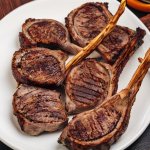redsoxdw_
Active member
I have some Greek recipes that call for Mahlepi (in Greek) - also known as Maheleb and other names, depending on the language. I have recently found a source near me - a place where I can buy it - so I can try some of the recipes.
I also did some research about what it is! Thought I'd share:
This unique spice has its roots in the fragrant cherry plums of the Prunus mahaleb tree in the Middle East. The seeds inside these little fruits are ground to make the mahleb spice that we've come to love.
Mahleb hits you with a sweet, floral scent, and a flavor that's a mix of bitter almond and cherry, with just a touch of spice. It's a star player in Greek baked goods like tsoureki, a sweet bread that's a staple during Easter but is also used in many other pastries and breads.
I also did some research about what it is! Thought I'd share:
This unique spice has its roots in the fragrant cherry plums of the Prunus mahaleb tree in the Middle East. The seeds inside these little fruits are ground to make the mahleb spice that we've come to love.
Mahleb hits you with a sweet, floral scent, and a flavor that's a mix of bitter almond and cherry, with just a touch of spice. It's a star player in Greek baked goods like tsoureki, a sweet bread that's a staple during Easter but is also used in many other pastries and breads.



